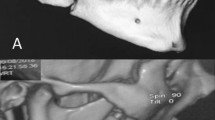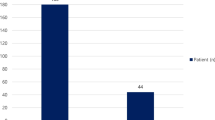Abstract
Introduction
Anecdotal reports suggest that the presence of mandibular third molars predispose the mandible to angle fractures. The purpose of this study was to evaluate the presence of mandibular third molars as a risk factor for angle fractures in patients with fractured mandibles.
Materials and method
A retrospective study was designed comprising of patients admitted for treatment of mandibular fractures between January 2006 and January 2009. Data sources were the patients’ medical records and radiographs. The predictor variables were the presence and position of third molar. Third molar position was grouped into 9 categories based on the Winter’s and Pell & Gregory classification. The outcome variable was the presence of an angle fracture. Other study variables included age, sex, race and mechanism of injury, associated fractures and fracture location.
Results
Of the 136 patients with mandibular third molars, 49 cases had angle fractures. Of the 18 patients without mandibular third molars, 03 had angle fractures.
Conclusion
The results of this study demonstrate that patients with fractured mandibles and mandibular third molars are nearly 2.2 times more likely to have an angle fracture than patients without mandibular third molars.
Similar content being viewed by others
References
Banks P. Killey’s fractures of the mandible. 4th ed. London: Wright; 1991. p1
Kelly DE, Harridan WF (1975) A survey of facial fractures related to teeth and edentulous regions. J Oral Surg 33(2): 146–149
Neal DC, Wagner WF, Alpert B (1978) Morbidity associated with teeth in line of mandibular fractures. J Oral Surg 36(11): 859–862
Ellis E, Moos K, El-Attar A (1985) Ten years of mandibular fractures: An analysis of 2,137 cases. Oral Surg Oral Med Oral Pathol 59(2): 120–129
Alling CC (1988) Mandibular fractures. In: Alling CC, Osborn DB, editors. Maxillofacial trauma. Philadelphia: Lea and Febiger 238–286
Alling CC, Alling RD (1993) Indications for management of impacted teeth. In: Alling CC, Helfrick JF, Alling RD, editors. Impacted teeth. Philadelphia: Saunders 46–64
Kruger E. Mandibular fractures. In: Kruger E, Schilli W, editors (1982) oOral maxillofacial traumatology. Chicago: Quintessence 211–236
Sicher H, DuBrul EL (1975) Oral anatomy. 6th ed. St Louis: CV Mosby 82–84
Halazonetis JA (1968) The weak regions of the mandible. Br J Oral Surg 6(1): 37–48
Huelke DF, Burdi AR, Eman CE (1961) Mandibular fractures as related to the site of trauma and the state of dentition. J Dent Res 40: 1262–1274
Reitzik M, Lownie JF, Cleaton Jones P, Austin J (1978) Experimental fractures of monkey mandibles. Int J Oral Surg 7(2): 100–103
Rudderman RR, Muuen RL (1992) Biomechanics of the facial skeleton. Clin Plast Surg 19: 11–29
Tevepaugh DB, Dodson TB (1995) Are mandibular third molars a risk factor for angle fractures? A retrospective cohort study J Oral Maxillofac Surg 53: 646–649
Winter GB (1926) Impacted third molars St Louis: American Medical Book Co. 241–279
Shiller WR (1975) Positional changes in mesioangular impacted mandibular third molars during a year. J Am Dent Assoc 99(3): 460–464
Pell GJ, Gregory GT (1933) Impacted mandibular third molars, classification and modified technique for removal. Dental Digest 39: 330–338
Moore JR (1976) Principles of Oral Surgery, 2nd edn. Manchester: Manchester University Press, 175
Safdar N, Meechan JG (1995) Relationship between fractures of the mandibular angle and the presence and state of eruption of the lower third molar. Oral Surg Oral Med Oral Pathol Oral Radiol Endod 79(6): 680–684
Lee JT, Dodson TB (2000) The effect of mandibular third molar presence and position on the risk of an angle fracture. J Oral Maxillofac Surg 58(4): 394–398
Ma’aita J, Alwrikat A (2000) Is the mandibular third molar a risk factor for mandibular angle fracture? Oral Surg Oral Med Oral Pathol Oral Radiol Endod 89(2): 143–146
Halmos D, Ellis E III, Dodson T, DMD (2004) Mandibular Third Molars and Angle Fractures. J Oral Maxillofac Surg 62(9): 1076–1081
Wolujewicz MA (1980) Fractures of the mandible involving the impacted third molar tooth: an analysis of 47 cases. Br J Oral Surg 18(2): 125–131
Fuselier JC, Ellis E III, Dodson TB (2002) Do Mandibular Third Molars Alter the Risk of Angle Fracture? J Oral Maxillofac Surg 60(5): 514–518
Iida S, Hassfeld S, Reuther T, Nomura K, Muhling J (2005) Relationship between the risk of mandibular angle fractures and the status of incompletely erupted mandibular third molar. J Craniomaxillofac Surg 33(3): 158–163
Meisami T, Sojat A, Sandor GK, Lawrence HP, Clokie CM (2002) Impacted third molars and risk of angle fracture. Int J Oral Maxillofac Surg 31(2): 140–144
Reitzik M (1995) Discussion in: Are mandibular third molars a risk of factor for angle fractures? A retrospective cohort study. J Oral Maxillofac Surg 53(6): 649–650
Author information
Authors and Affiliations
Corresponding author
Rights and permissions
About this article
Cite this article
Rajkumar, K., Ramen, S., Chowdhury, R. et al. Mandibular third molars as a risk factor for angle fractures: a retrospective study. J. Maxillofac. Oral Surg. 8, 237–240 (2009). https://doi.org/10.1007/s12663-009-0058-z
Received:
Accepted:
Published:
Issue Date:
DOI: https://doi.org/10.1007/s12663-009-0058-z




